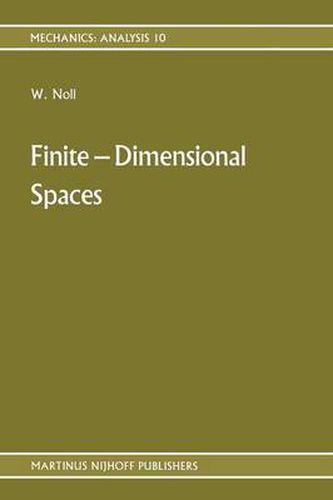Readings Newsletter
Become a Readings Member to make your shopping experience even easier.
Sign in or sign up for free!
You’re not far away from qualifying for FREE standard shipping within Australia
You’ve qualified for FREE standard shipping within Australia
The cart is loading…






This title is printed to order. This book may have been self-published. If so, we cannot guarantee the quality of the content. In the main most books will have gone through the editing process however some may not. We therefore suggest that you be aware of this before ordering this book. If in doubt check either the author or publisher’s details as we are unable to accept any returns unless they are faulty. Please contact us if you have any questions.
A. Audience. This treatise (consisting of the present VoU and of VoUI, to be published) is primarily intended to be a textbook for a core course in mathematics at the advanced undergraduate or the beginning graduate level. The treatise should also be useful as a textbook for selected stu dents in honors programs at the sophomore and junior level. Finally, it should be of use to theoretically inclined scientists and engineers who wish to gain a better understanding of those parts of mathemat ics that are most likely to help them gain insight into the conceptual foundations of the scientific discipline of their interest. B. Prerequisites. Before studying this treatise, a student should be familiar with the material summarized in Chapters 0 and 1 of Vol.1. Three one-semester courses in serious mathematics should be sufficient to gain such fa miliarity. The first should be an introduction to contemporary math ematics and should cover sets, families, mappings, relations, number systems, and basic algebraic structures. The second should be an in troduction to rigorous real analysis, dealing with real numbers and real sequences, and with limits, continuity, differentiation, and integration of real functions of one real variable. The third should be an intro duction to linear algebra, with emphasis on concepts rather than on computational procedures. C. Organization.
$9.00 standard shipping within Australia
FREE standard shipping within Australia for orders over $100.00
Express & International shipping calculated at checkout
This title is printed to order. This book may have been self-published. If so, we cannot guarantee the quality of the content. In the main most books will have gone through the editing process however some may not. We therefore suggest that you be aware of this before ordering this book. If in doubt check either the author or publisher’s details as we are unable to accept any returns unless they are faulty. Please contact us if you have any questions.
A. Audience. This treatise (consisting of the present VoU and of VoUI, to be published) is primarily intended to be a textbook for a core course in mathematics at the advanced undergraduate or the beginning graduate level. The treatise should also be useful as a textbook for selected stu dents in honors programs at the sophomore and junior level. Finally, it should be of use to theoretically inclined scientists and engineers who wish to gain a better understanding of those parts of mathemat ics that are most likely to help them gain insight into the conceptual foundations of the scientific discipline of their interest. B. Prerequisites. Before studying this treatise, a student should be familiar with the material summarized in Chapters 0 and 1 of Vol.1. Three one-semester courses in serious mathematics should be sufficient to gain such fa miliarity. The first should be an introduction to contemporary math ematics and should cover sets, families, mappings, relations, number systems, and basic algebraic structures. The second should be an in troduction to rigorous real analysis, dealing with real numbers and real sequences, and with limits, continuity, differentiation, and integration of real functions of one real variable. The third should be an intro duction to linear algebra, with emphasis on concepts rather than on computational procedures. C. Organization.